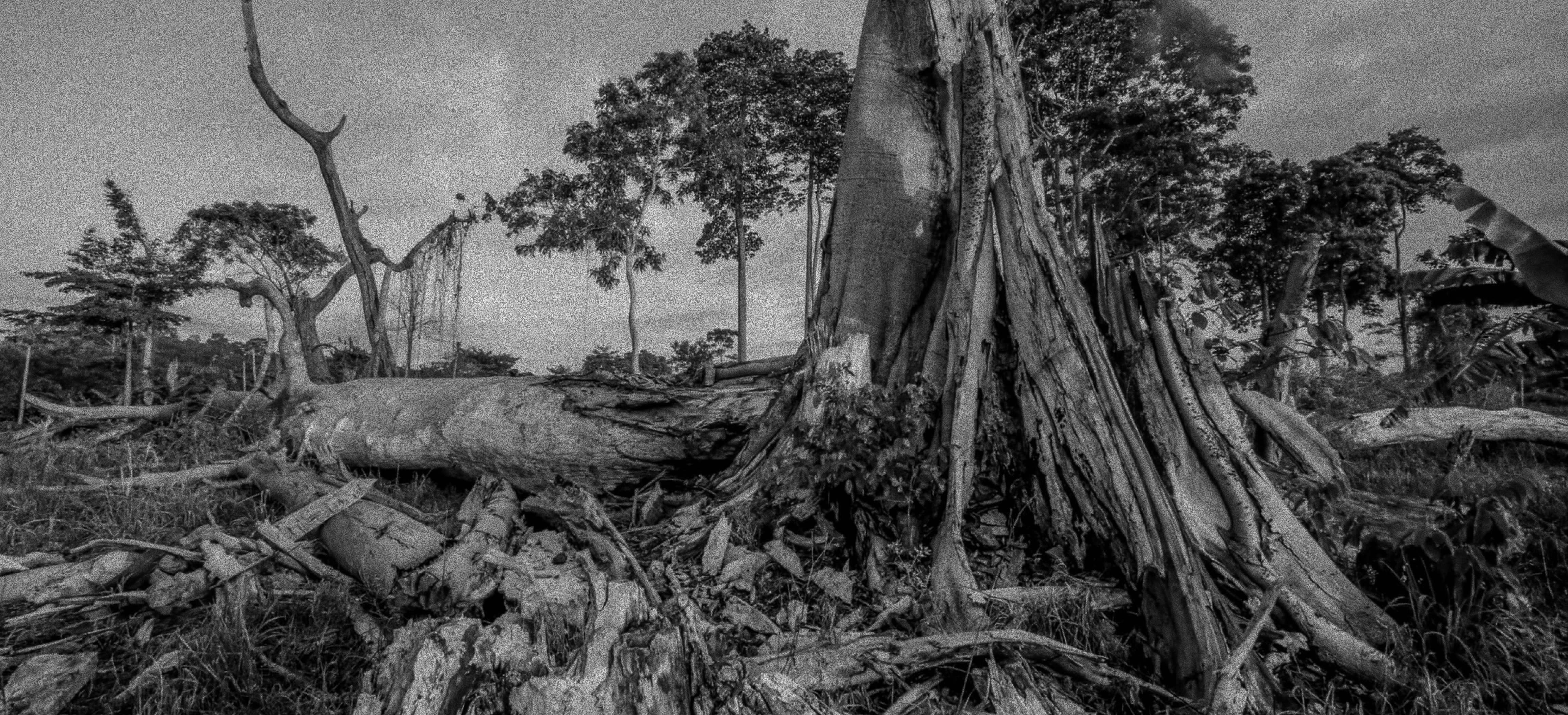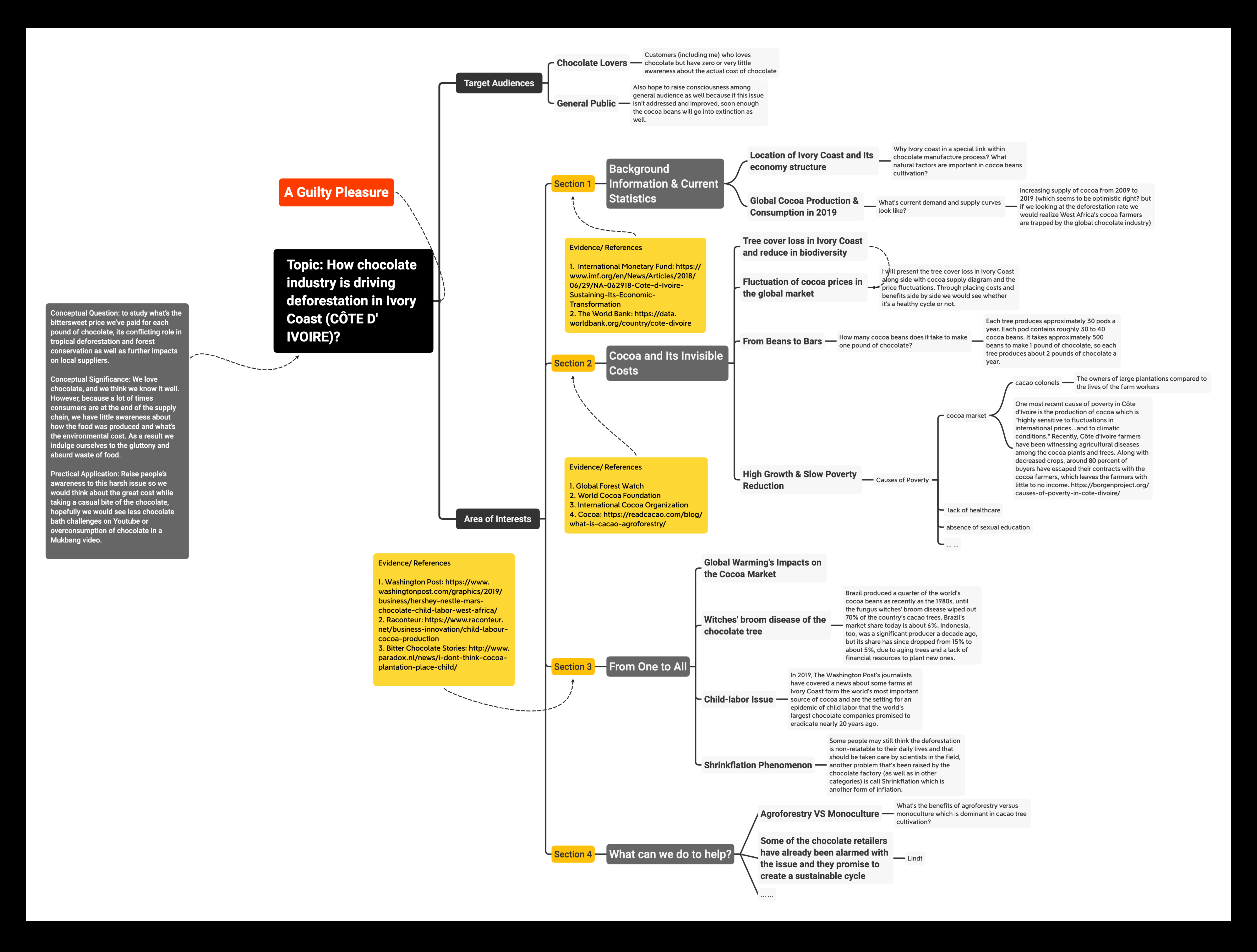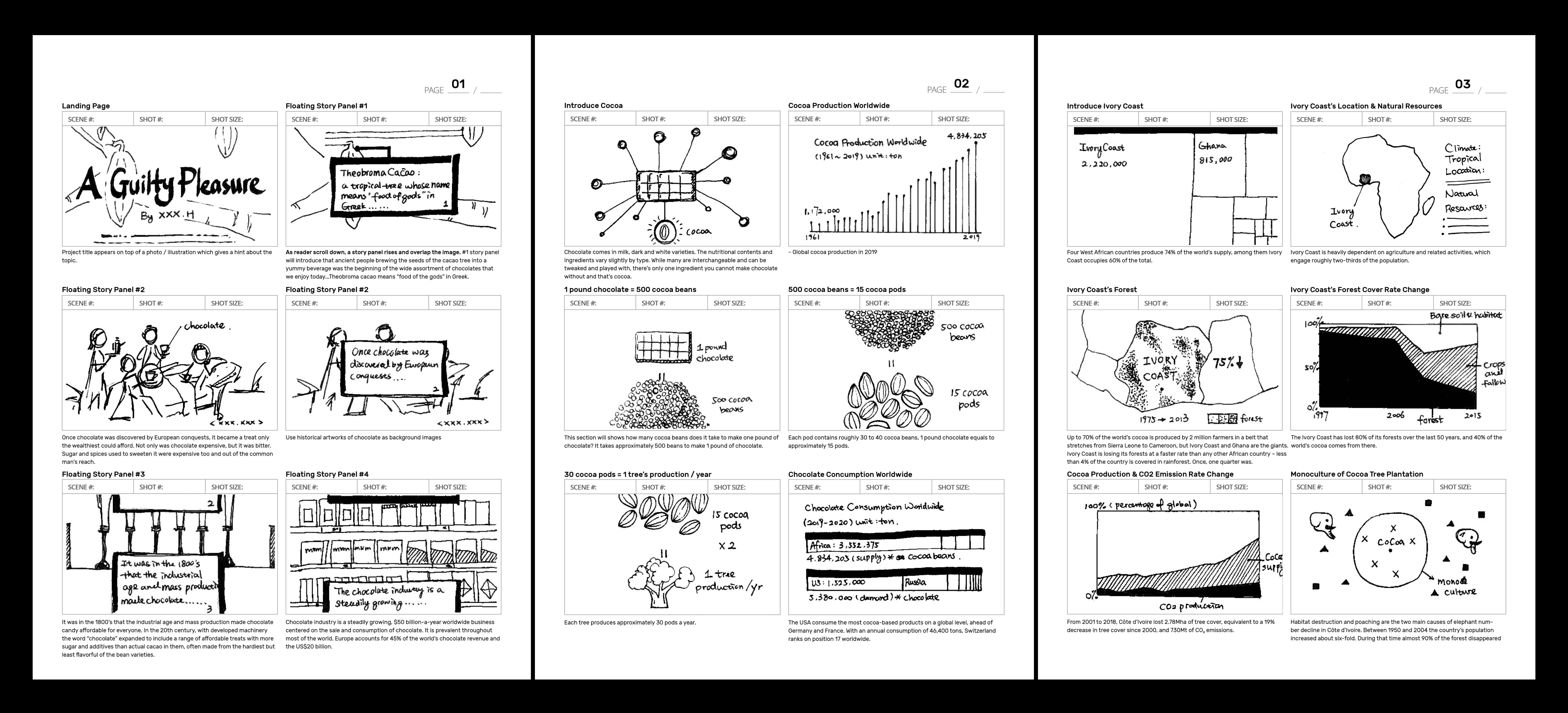How the monoculture cocoa industry is driving deforestation in the Ivory Coast?
A Guilty Pleasure aims to visualize how the monoculture cocoa industry is driving deforestation in
the Ivory Coast. By drawing people’s attention to this issue, we would think about what’s the
bittersweet price we’ve paid for each pound of chocolate? Through the bridges built between
datasets, we could observe its conflicting role in tropical deforestation and impacts on local
suppliers more closely.

Data Resources
This project isn’t based on a singular data source and requires aggregating multiple available
datasets together in order to offer the breadth and depth analysis on this topic. Datasets used in
this project were mostly collected from governmental or non-profit organizations dedicated to
environment study or forests’ monitoring. Some datasets were collected from cocoa focused
organizations such as ICCO (International Cocoa Organization), World Cocoa Foundation and ICI
(International Cocoa Initiative).
| Data |
Description |
| Global Cocoa Production in 2019 |
Gro Intelligence, "As Cocoa Harvest Begins, Risks Emerge From Major ...." 24 Oct. 2019
|
| Global Cocoa Trade |
Gro Intelligence, "Developing Economies Challenge Europe's Chocolate Reign ...." 16 May.
2018 |
| Global Cocoa Trade Data |
Resource Trade.Earth, The trade data on this site are from the Chatham House Resource
Trade Database (CHRTD) |
| World cocoa bean production, grindings and stocks |
International Cocoa Organization |
| Information Sheet on Cocoa |
Food and Agriculture Organization of the United Nations |
| Chocolate: The Journey from Beans from Bars |
Rainforest-alliance.org |
| Cocoa Farming and Primate Extirpation Inside Cote D'ivoire's Protected Areas |
SAGE JOURNALS |
| The production process – from cocoa beans to semi finished products |
European Cocoa Association |

Mindmap
Considered the vast scope of datasets and how verbose
the webpage length
could become. Instead of arranging all contents on the same page and involving an “endless”
scrolling, I decided to divide them into four sections based on the internal dependency. Meanwhile
the section sequence is tailored based on narrative logics which will make the datasets and
statements suggested in this project more pellucid to my target audiences.
Storyboard
Users land on a homepage which adopts a horizontal
scrolling structure. The
“chocolate label” on the homepage summarizes my project title and provides a glance at the topic but
not giving away too much information at the same time. As they scroll to the right side, it feels
like unwrapping a chocolate bar and it also reveals the introduction about this project as well as a
menu of each section’s title. Although users may choose any section to begin with, the suggested
order is from PART1 to PART4.
Treatment
My target
audiences are lay people who aren’t professionals or experts in both the cocoa and chocolate
industry, therefore in order to avoid faultage of conception, I included definitions for some
terminology words that appeared in the visualization.Inspired by the explanatory genre of a
storytelling data visualization’s
structure, this project adopts the scrolly-telling method which allows audiences to dive into
the data stories at their own paces.
CODING
This thesis project went through a long process from
ideation, mind-map,
prototyping, data cleaning to final execution. I’m using d3.js as the main language in this project,
in some sections I also utilized Mapbox GL to present the spatialized data.





Through identifying
each type of deforestation that has taken place during the cocoa cultivation process, we would
remedy the problem with potential solutions. One of them is to advocate a better alternative to
monoculture farming method which is agroforestry. Some farming sites have already put the method
into test and the result is positive. My hope is that with more and more research being done in
multi-functionality comparisons, it could help scientists and decision makers to determine long-term
strategies which would use plant biodiversity as an actionable lever to adapt and mitigate climate
change. Besides supporting
chocolate companies who are dedicated to creating chocolate from deforestation-free cocoa beans, as
customers we can also minimize our food waste footprint to appreciate the hardship behind every
production.














